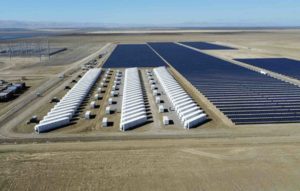The ACT government has outlined an ambitious plan to source 90 per cent of its energy requirements from renewable energy by 2020, with solar, wind and energy efficiency at the centrepiece of its strategy.
In a refreshing change from the head in the sand policies on climate change and clean energy adopted by the state conservative governments, particularly Queensland and Victoria, the ACT Climate Change Strategy, released by Energy Minister Simon Corbell today, also includes a target to reduce the ACT’s carbon emissions by 40 per cent from 1990 levels by 2020, by 80 per cent by 2050, and to achieve “carbon neutrality” by 2060.
“Solar energy has been the centrepiece of the government’s renewable energy projects to date but this strategy outlines a broader pathway to achieve carbon reduction targets,” Corbell said in a statement.
“The government will combine the benefits of new renewable energy sources like wind with existing solar projects, both here and in the capital region; encourage more use of public transport to reduce traffic emissions and boost energy efficiency in homes and buildings to reduce our carbon footprint and save Canberrans money.”
The ACT government has already shown leadership in the renewables sector, implementing the first feed in tariff for commercial scale solar PV installations, and recently completed the first “reverse auction” for utility scale solar that will see the country’s largest solar farm, a 20MW facility near Royalla, built by the Spanish firm FRV by 2014.
The total portfolio of 40MW to be allocated via the auction will account for around 2 per cent of the territory’s needs. The 90 per cent target envisages up to 90MW of large scale solar PV by 2020, around 23MW of biomass from landfill waste, and the purchase of renewable energy certificates and output from up to 583MW of wind power in the ACT/NSW border region. It also includes around 72MW of small and medium scale rooftop solar PV.
It estimates around that a maximum 130-160MW of solar energy could be installed in the territory, but its reverse auction system could accelerate the deployment of solar thermal and geothermal technologies if these also looked promising.
The key areas of reduction in carbon emissions contained in the climate change strategy include:
– 218,000 tonnes of carbon emissions reduced from the residential sector through increased energy efficiency; restrictions on installations of high emission hot water heaters, continuation of the ACTSmart programs and collaboration with local tertiary education institutions to trial new technologies to produce and store energy;
– 181,000 tonnes reduction in the commercial sector through the possible expansion of the energy efficiency scheme to large businesses and buildings as well as a heating and cooling load map to encourage private investment in low-carbon energy networks;
– 138,000 tonnes reductions through the implementation of the transport for Canberra strategy which will increase public transport frequency to encourage people out of their private vehicles;
– and 1,471,000 tonnes reduction through the deployment of large-scale renewable energy including solar and wind power.
Wave power probably won’t be an option









